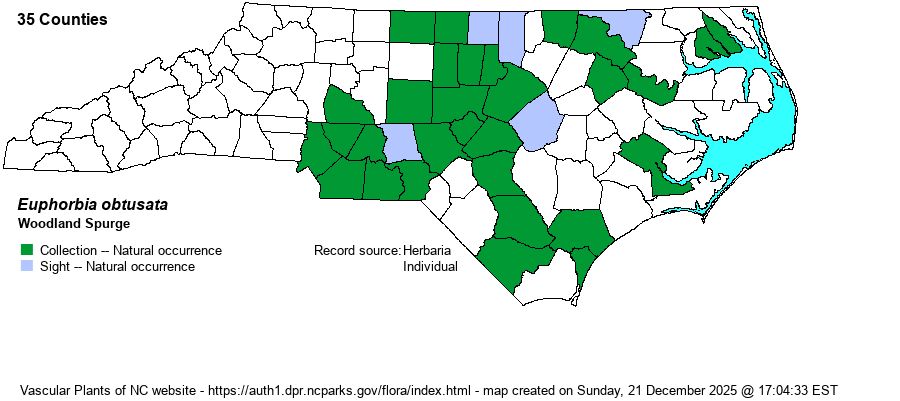| Author | Pursh | |
| Distribution | Mid- to lower Piedmont and Coastal Plain; these latter populations grow in sites with elevated nutrients and/or minerals. Absent from the Sandhills proper.
PA to IN and IA, south to SC and TX. | |
| Abundance | Uncommon to infrequent in the lower Piedmont and in the Coastal Plain along brownwater rivers (mainly the Cape Fear and the Roanoke). Very rare in the Coastal Plain away from such brownwater floodplains. Individual populations typically hold only a few plants. Though it is not a common species, it is widespread enough for the State Rank to be moved to S3S4. | |
| Habitat | Mesic to moist brownwater bottomland hardwoods, floodplain forests, and openings in such habitats. Often in edges of bottomlands near bridges or other damp clearings in floodplains. A species of rich alluvial soils. |
| Phenology | Flowering and fruiting April-July. | |
| Identification | Plants grow 8 inches to 2 feet tall with alternate, spaced, oblanceolate leaves which are broadest beyond the middle, have rather truncate bases, and rounded tips. Most plants are not branched, except for small ones near the stem apex. The small inflorescences of yellowish flowers are terminal and on branches of uppermost leaves. From the very similar E. spathulata it can be told by larger seeds (1.7-2.3 mm vs. 1.5-1.7 mm of the latter) which have smooth surfaces (vs. reticulate in E. spathulata); and also by red floral glands (vs. yellow). Note that many references consider these two taxa as one species, typically merging E. obtusata into that species. The more delicate E. commutata is a very rare upland species, usually much shorter and with completely entire leaves. Woodland Spurge is somewhat familiar to botanists in the eastern Piedmont and others who work along brownwater rivers in the eastern half of the state. | |
| Taxonomic Comments | FNA lumps this into E. spathulata, whereas Weakley (2018) recognizes it as a valid species.
| |
| Other Common Name(s) | | |
| State Rank | S3 [S3S4] | |
| Global Rank | G5 [G4?] | |
| State Status | | |
| US Status | | |
| USACE-agcp | | |
| USACE-emp | | |

